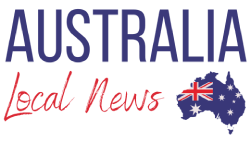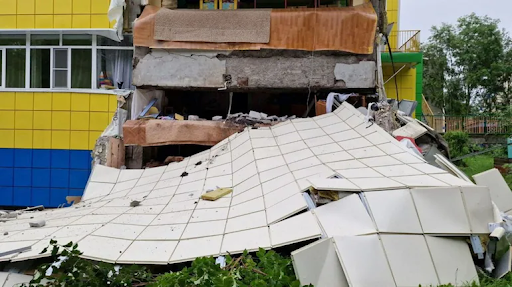A massive 8.8-magnitude earthquake off Russia’s coast triggered a tsunami that struck the Kuril Islands and Japan’s northern island of Hokkaido.
The initial wave reached Severo-Kurilsk, the main settlement in Russia’s Kuril Islands. According to the Pacific Tsunami Warning Centre, waves measuring one to three metres above tide level could impact certain coastal areas of Hawaii, Chile, Japan, and the Solomon Islands.
At present, there is no tsunami threat for New Zealand or Australia.
Japan issues evacuation advisory for 1.9 million as waves hit near Tokyo
Over 1.9 million people in Japan have been urged to move to higher ground as tsunami waves strike multiple coastal areas and nationwide transport faces disruptions—though the waves are currently smaller than earlier predictions.
The Fire and Disaster Management Agency has issued localized evacuation orders impacting 1,905,596 residents across 21 prefectures, with the largest evacuations in Hokkaido, Kanagawa, and Wakayama.
The first waves reached Hokkaido, Japan’s northernmost island, where footage from Reuters and Nippon News Network showed residents sheltering on rooftops while tsunami sirens echoed across the region on Wednesday morning.
Current measurements show waves of 30–50 cm along the east coast, gradually nearing the Tokyo Metropolitan Area, according to the Japan Meteorological Agency. While these are well below the initial three-metre forecast, conditions could change, and additional waves may still arrive.

Transport disruptions include the closure of the runway at Sendai International Airport (north of Tokyo on the Pacific coast) and the suspension of ferry services from Hokkaido, Aomori, and Tokyo Bay.
Do you want me to also prepare a short “breaking news” style version for social media or headlines? It will make it more attention-grabbing.
Cruises diverted from Hawaii coast
Several cruise passengers have reported their ships departing the Hawaiian coastline ahead of schedule following the tsunami warning.
The US Coast Guard ordered all commercial vessels to leave Hawaii’s ports and barred incoming ships until the tsunami advisories are lifted.
In a statement, the Coast Guard Oceania District said:
All harbours in Hawaii are closed to incoming vessel traffic. Vessels near the Hawaiian Islands or inbound to ports must remain offshore until conditions improve.”
The Norwegian Cruise Line’s Pride of America has already left the Port of Hilo early.
Passenger Heather Crawford shared on X that many travelers on excursions were left behind as the ship departed, adding, “You can hear the warning sirens.”
Drone footage captures powerful aftershocks
Drone footage from Severo-Kurilsky District in Russia’s Sakhalin Oblast has captured the intense aftershocks following the powerful 8.8-magnitude earthquake.
According to the Unified Geophysical Service of the Russian Academy of Sciences, at least nine additional tremors—ranging between 5.4 and 5.8 in magnitude—were recorded in the same region within hours of the main quake.
The initial earthquake struck off the coast of the Kamchatka Peninsula, about 136 km east of Petropavlovsk-Kamchatsky earlier today.
People ‘panic buying’ water in Hawaii
An Australian paddleboarder in Hawaii says he and his friends sought higher ground after tsunami warning sirens sounded along the beach.
Charlie Verco, 24, from Bondi—scheduled to fly home tomorrow—expressed concern that flights from O‘ahu could be affected.
We were on the shore at Diamond Head when we were evacuated,” Charlie said. “Some locals mentioned these alerts happen often, but after making a few calls, they felt this one might be serious.”
His brother George noted that people began panic buying water following the evacuation alert, while some surfers still went into the water despite the warnings.
O‘ahu resident Naomi added that this time, the community appeared to be taking the warning more seriously. “At the stores I visited, everyone was buying water,” she said.
Authorities in California warn thrillseekers to stay away from coast
The National Weather Service’s Bay Area office has issued a strong warning to thrillseekers, urging them to stay away from the coast.
Officials stressed that the tsunami will not consist of a single wave but rather multiple surges carrying a significant volume of water toward the shore.
In a post on X (formerly Twitter), the agency wrote:
Friends, please be aware: a tsunami is a series of waves bringing a large mass of water to our coast.
This will NOT be a single wave.
Do NOT head to the coast to take photos.
You won’t just endanger yourself—you’ll also put rescue teams at risk.”
Smartraveller warning for Aussies in Hawaii
The latest Smartraveller advisory has cautioned Australians about the risk of tsunamis in parts of the United States.
Travellers in Hawaii have been urged to follow local authority instructions and evacuate without delay.
A magnitude 8.6 earthquake has struck approximately 60 km off the southern tip of Russia’s Kamchatka Peninsula,” the advisory states.
A tsunami warning has been issued for the US West Coast, including Alaska and Hawaii, with evacuation orders in effect for Hawaii.
The advice emphasizes:
If you are in the affected area, move to higher ground immediately. Follow any official evacuation orders from local authorities.
Similar warnings have been extended to other popular Pacific destinations, including Samoa, Fiji, Tonga, the Cook Islands, and the Solomon Islands.
Russia hit hardest by earthquake so far
The epicentre of the powerful earthquake in Russia’s Kamchatka region has experienced the heaviest damage so far.
A photograph shows rescue teams working at a damaged kindergarten in Petropavlovsk-Kamchatsky.
In the northern Kuril Islands, the coastal area of Severo-Kurilsk was flooded by tsunami waves, though no serious injuries have been reported.
What is a “tsunami advisory”?
A tsunami advisory differs from a tsunami warning.
An advisory is issued when hazardous conditions are either occurring or likely to occur, particularly for those in or near the water. It warns of the potential for strong currents, dangerous waves, and possible flooding in beaches or harbours.
A tsunami warning, on the other hand, signals that the threat is severe enough to require immediate evacuation to higher ground or further inland to protect life and property.
San Diego residents told to stay away from beaches
The National Weather Service in San Diego has urged residents to avoid beaches and waterways until further notice.
According to the agency, the earthquake near Russia’s Kamchatka Peninsula could generate strong currents and hazardous waves along the coast, as posted on X.
In Huntington Beach, Southern California, all beaches, harbours, and the pier have been closed as a precaution. A tsunami advisory remains in effect for the US West Coast.
Do you want me to also make a short emergency alert version suitable for TV tickers or social media updates?
Hawaii warns residents waves are coming
Hawaiian authorities have alerted residents on several islands that the first impact of the tsunami is expected within hours.
The initial wave is forecast to arrive at approximately 3:15 pm AEST.
In a post on X, the Hawaii Emergency Management Agency announced that the All Hazards Sirens will sound shortly across all Hawaiian islands.
Trump says ‘stay strong’ amid tsunami warnings
US President Donald Trump has called on Americans in the tsunami-affected areas to “stay strong and stay safe” in messages shared on X and Truth Social.
He also shared a link to updated information following tsunami warnings issued for Hawaii, Alaska, Washington, Oregon, and California.
Meanwhile, the first tsunami waves have already begun reaching Alaska’s western Aleutian Islands.
Nuclear workers evacuate in Fukushima
Workers at the Fukushima Daiichi and Fukushima Daini nuclear plants, about 265 km from Tokyo, have been evacuated to higher ground as a precaution.
The Fukushima Daiichi facility was the site of the 2011 nuclear disaster triggered by a 9.0-magnitude earthquake and tsunami.
According to the Tokyo Electric Power Company (TEPCO), there have been no injuries or operational abnormalities reported at either plant so far.
Estimated tsunami arrival times in the US
The size of the potential tsunami in affected areas remains uncertain, but the US Tsunami Warning Centres have released estimated arrival times.
Alaska’s western Aleutian Islands – First waves have already arrived.
- Kodiak, Alaska – Approx. 2:20 pm AEST
- Southeast Alaska – Between 2:45 pm and 3:55 pm AEST
- Hawaii – Around 2:15 pm AEST
- Washington & Oregon – Between 4:35 pm and 4:55 pm AEST
- Northern California – Approx. 4:50 pm AEST
- San Francisco Bay – Around 5:50 pm AEST
- Southern California – Around 6:00 pm AEST
Following the magnitude 8.7 earthquake in Russia’s far east, tsunami warnings have been issued for Japan, Alaska, California, and Hawaii.
Reports indicate damage and evacuations in Russian areas near the epicentre on the Kamchatka Peninsula.
The Pacific Tsunami Warning Centre has warned that waves of up to three metres above tide level are possible along parts of Hawaii, Chile, Japan, and the Solomon Islands.
Waves exceeding three metres were predicted for parts of the Russian and Ecuadorian coasts.
Japan’s Meteorological Agency issued a tsunami alert for the Pacific coast of Japan, warning that waves up to three metres could reach the northern coastline in under 30 minutes after the alert was issued.


Leave a Reply